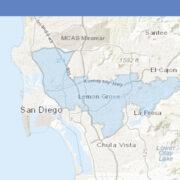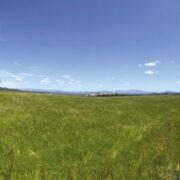What is Reflux Heartburns?
Reflux Heartburns is a milder stage of Reflux Esophagitis, which is an inflammatory condition where Hydrocholoric Acid, normally produced by the stomach to aid in the digestion of food, regurgitates (goes back up) to the lower end of the esophagus (food pipe) which is connected to the stomach. In majority cases of reflux, the lower esophageal sphincter (“valve”) is incompetent (loose) and allows stomach acid and food to back up to the esophagus, a disease medically known as Gastroesophageal Reflux Disease (GERD). In some cases, acid reflux is not necessary for heartburns to occur.
Why is acid reflux bad?
The stomach mucosa (lining) normally produces the digestive acid and tolerates it much better than the esophagus, which has a different cell lining that is less resistant to the acid. Reflux of stomach acid into the lower end of the esophagus, therefore, causes esophagitis (irritation, inflammation and swelling), which, if allowed to continue untreated, could cause esophageal stricture (scarring) and narrowing, making the channel connecting the food pipe to the stomach too small for food to pass through.
Is this condition common?
Yes, very common. Sixty percent of the adult population has some type of GI reflux. About seven million Americans have GERD. Most patients complain of burning discomfort in the pit of the stomach after meals or at night, while lying down, allowing stomach acid to flow back to the esophagus. Many times the burning disappears when the person gets up. The symptom could also be that of indigestion or “sour stomach.” People who take antacids, like Alka Seltzer, Maalox, Tums, etc. could have GERD.
Is Hiatal Hernia present in Reflux Esophagitis?
The food pipe, which is in the chest, goes down through a hole in the diaphram (the tent-like flat muscle that separates the abdomen from the chest) to connect with the stomach in the abdomen. This hole is called a hiatus. If this hole becomes too large, the stomach, which is normally in the abdomen, could move up to the chest through the hole. If this happens, it is called Hiatus Hernia. Hiatus Hernia is found in only 20-30 percent of those with reflux esophagitis. The majority do not have accompanying Hiatus Hernia.
Any other possible cause of esophagitis and stricture?
Caustic acids, or alkali (the chemical in Liquid Plumber, Sosa, etc.) when swallowed (as in suicides), cause massive burns, swelling, sometimes esophageal perforation (hole through the damaged foodpipe) and leads to severe esophagitis and esophageal stricture. The perforation could also result in Mediastinitis, a serious and overwhelming infection inside the chest, which has a high fatality or mortality rate. Chest surgery is usually carried out immediately the moment the diagnosis is made.
What are the possible complications of GERD?
Uncomplicated gastroesophageal reflux responds well to medical therapy, and may be tolerated for many years. However, some people on treatment may still develop complications, like esophagitis, esophageal ulcer, hemorrhage, esophageal stricture, and Barrett’s metaplasia (cell changes in the esophagus that could transform to cancer).
How is the diagnosis of GERD confirmed?
A careful history and thorough physical examination, coupled with X-Ray Barium Swallow (done with the patient on his back and the head lower than the feet to check for reflux of barium), esophageal manometry (pressure measurement), pH (acidity) monitoring, Bernstein acid test, and endoscopy (looking inside and down the foodpipe by passing a lighted “telescope” to see the condition of the lower foodpipe and stomach). Through this same scope, tiny bopsies could be performed, to see the tissue reaction and to check for cancer.
What is the first step treatment of GERD?
The initial management of patients with persisting symptoms of GER consists of (1) Changing diet (avoiding spices, caffeine, chocolate, alcohol, cola drinks), (2) quitting cigarette smoking, (3) avoiding tight, binding clothing, especially after a meal (4) refraining from lying down immediately after a meal, and elevating the head of the bed when lying down to keep gastric acid and contents in the stomach by gravity, and (5) taking H2 acid blocker drug under the close supervision of your physician which is usually 80 percent successful in healing severe erosive esophagitis.
When is surgery recommended?
When the strategic and intensive medical treatments enumerated above fail after several months to a year of trial, or when the acid reducer drug is ineffective, or when the esophageal stricture does not stay open after dilatation, then surgery is recommended.
What is the objective of the operation?
The aim of the operation is to restore the anatomical and physiological condition in the lower end of the esophagus, as surgically possible, to minimize or prevent reflux of the gastric acid and stomach content up the esophagus. If a bleeding esophageal ulcer and a stricture are present, then the surgeon will also address these accordingly.
How successful are these anti-reflux operations for GERD?
Very successful in majority of cases. Ten-year follow-up studies, some even longer, show that up to 90 percent of the patients are rendered asymptomatic (symptom-free), doing well, provided the changes in lifestyle recommended above are strictly followed.
***
Philip S. Chua, MD, FACS, FPCS, Cardiac Surgeon Emeritus in Northwest Indiana and chairman of cardiac surgery from 1997 to 2010 at Cebu Doctors University Hospital, where he holds the title of Physician Emeritus in Surgery, is based in Las Vegas, Nevada. He is a Fellow of the American College of Surgeons, the Philippine College of Surgeons, and the Denton A. Cooley Cardiovascular Surgical Society. He is the chairman of the Filipino United Network – USA, a 501(c)(3) humanitarian foundation in the United States. Email: [email protected]




